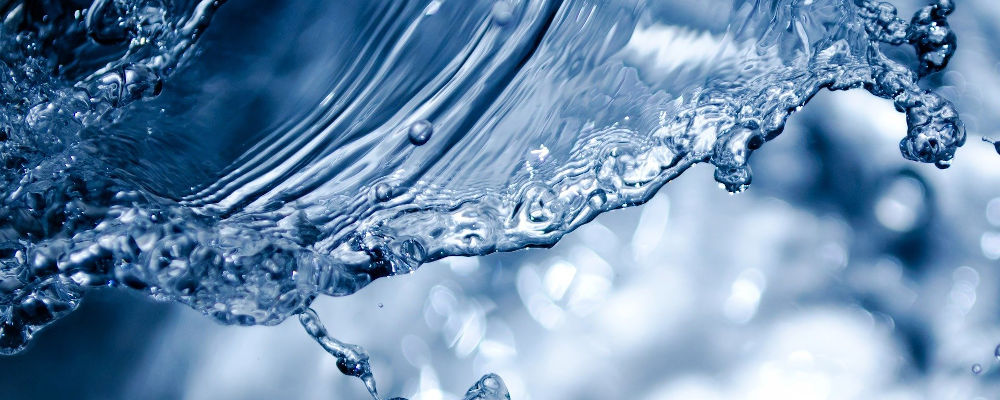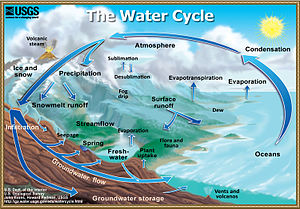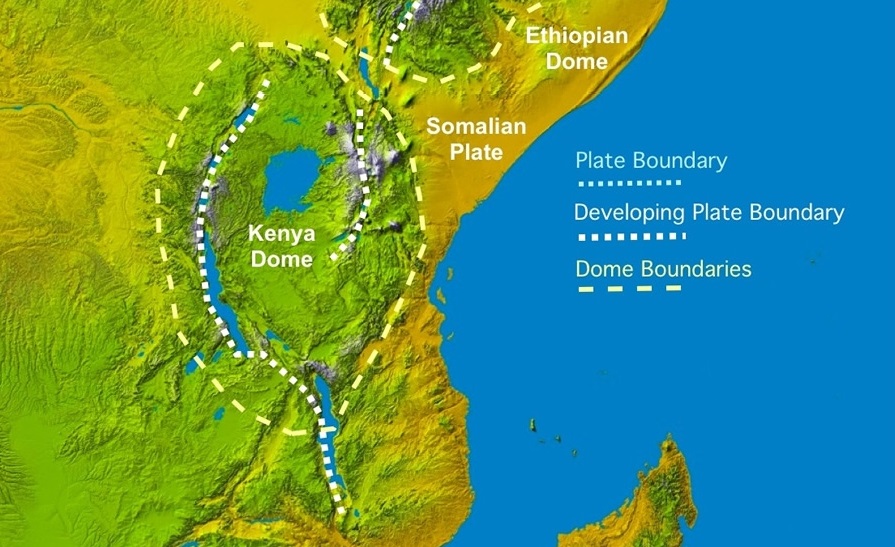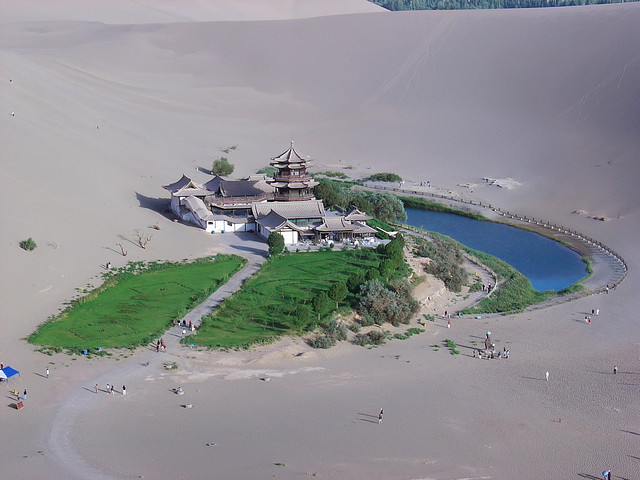
Deep Hydrology: the Promise of Primary Water
By Lyn Hebenstreit: 08.21.13
 Contrary to popular belief, clean, safe, fresh water on our planet is not scarce, but abundant. That’s how I began a presentation at a conference earlier this year on “New Generation Watershed Management in Africa” co-sponsored by the United Nations Food and Agriculture Organization (FAO) and the Freedom from Hunger Council of Ireland (Gorta).
Contrary to popular belief, clean, safe, fresh water on our planet is not scarce, but abundant. That’s how I began a presentation at a conference earlier this year on “New Generation Watershed Management in Africa” co-sponsored by the United Nations Food and Agriculture Organization (FAO) and the Freedom from Hunger Council of Ireland (Gorta).
You can imagine the incredulous looks I received! After all, water is the “new oil”, “blue gold”, the ultimate prize of this century’s resource wars. Water is life, and the lack of it the greatest threat to the survival of mankind at this time in human history – and so on. How could I make such a ludicrous assertion? Well, I can’t expect to convince you in so short an article, but I do hope to offer a few insights that may inspire hope, and prompt you to deeper consideration.
First of all, let me clarify what I mean by abundant. Abundance is not unlimited supply or vast surpluses, but simply, always enough – when used consciously, responsibly and conservatively. Do we really need more than that?
 Now, let’s explore some of water’s lesser known past on this planet for clues about its future. Most of us are familiar with the hydrological cycle – water evaporates from the ocean’s surface, condenses into clouds and is blown overland where it precipitates as rain and snow and eventually finds its way back to the ocean via lakes, rivers and subterranean flow.
Now, let’s explore some of water’s lesser known past on this planet for clues about its future. Most of us are familiar with the hydrological cycle – water evaporates from the ocean’s surface, condenses into clouds and is blown overland where it precipitates as rain and snow and eventually finds its way back to the ocean via lakes, rivers and subterranean flow.
That’s great as far as it goes, but 4.5 billion years ago, the earth was a smoldering cinder. Where were the oceans then – and more importantly, how did they come to dominate over 70% of the planet’s surface?
Until recently, comets were considered the most likely source of Earth’s water, but new data from the mass spectrometry of the Hale-Bopp comet reveals a concentration of “heavy water” (deuterium) far higher than that found in the world’s oceans, leading researchers to conclude that only a small portion, perhaps 10%, of Earth’s water derives from comets.
Of course, many people conclude the obvious – that the oceans came from rain. Well, there’s certainly some truth in that, but according to the best estimates, if every molecule of water was squeezed from the atmosphere, it would cover the Earth with only about one inch of water. If rain filled the oceans, where did the rain come from?
Over 50 years ago, UCLA geology professor and former president of the American Geological Society, William Rubey, was awarded the National Medal of Science by President Lyndon Johnson for his theory that both the oceans and the earth’s atmosphere come from the interior of the earth. According to his calculations, based on extensive data from the Geophysical Laboratory of the Carnegie Institution in Washington, DC, the uplift of an igneous crust 40 km thick will release enough water to fill the present oceans.
Today, this water is known as primary, juvenile, magmatic or earth-generated water, but knowledge of it goes back thousands of years. In Genesis II, 5-6, for example, we read the following:
When the LORD God made the earth and the heavens, neither wild plants nor grains were growing on the earth. For the LORD God had not yet sent rain to water the earth, and there were no people to cultivate the soil. Instead, springs came up from the ground and watered all the land.
Moses was perhaps the first primary water hydrologist. After wandering for 40 years in the wilderness, the Israelites were getting thirsty. So:
“Moses lifted up his hand, and with his rod he smote the rock twice: and the water came out abundantly, and the congregation drank, and their beasts also.” (Numbers 20:11)
In 2011, I was in Jordan to do a primary water presentation at the International Permaculture Convergence and afterwards visited the desert site near the crest of a desolate limestone ridge where Moses allegedly struck that rock. After 6,000 years, water was still coming out in abundance!
Primary water was well known to the ancient Greeks. Aristotle, in Meterologicia notes:
“The water coming from the earth unites with rain water to produce rivers. The rainfall alone is quite insufficient to supply the rivers of the world with water.”
In the Koran we read:
“For among rocks there are some from which rivers gush forth; others there are which when split asunder send forth water.” (2, Verse 74)
Leonardo da Vinci, Johannes Kepler and Rene Descartes each considered the vast network of subterranean water as the blood of our planetary organism. In one of the clearest expressions of the modern notion of primary water, 16th century scientist Georgius Agricola, considered the “Father of Mineralogy”, observed that:
“Besides rain, there is another kind of water by which the interior of the earth is soaked, so that being heated it can continually give off halitus (water vapor), from which arises a great and abundant force of waters.”
More recent primary water pioneers include the great early 20th century Austrian geologist, Eduard Suess, who coined the term “juvenile water”, and his student, Stephan Reiss, a mining engineer who located prolific wells throughout the world at the request of heads of state who learned of his unconventional, but highly successful techniques for locating water in arid, drought stricken regions.
Master dowsers Vern Cameron and Bill Cox were also successful in siting highly productive wells with their understanding of primary water. In the 1950s they were able to restore California’s dried out Lake Elsinore to its original glory with three primary water wells producing over 9,500 gallons of water per minute in total.
Despite the scant attention paid to primary water by conventional hydrologists, my own research has produced a wealth of evidence highlighting its fundamental importance to our planetary life, its widespread appearance and the promise it holds for humanity.

Africa’s Great Rift Valley, whose deep lakes are home to over 25% of the world’s fresh water. Hydrothermal vents discovered in the last 20 years at the bottom of these lakes testify to the primary origin of these waters.
For example, all of the world’s largest lakes are found in rift zones, geologic discontinuities or volcanically active regions where deep waters of magmatic origin make their way to the surface.
All of the world’s major rivers are fed by primary sources. Countless springs all over the world, both hot and cold, have flowed abundantly for thousands of years without interruption – even in some of the world’s most arid regions.
Volcanic lakes, hydrothermal vents, desert oases, deep boreholes and the abundance of water throughout our solar system and in deep space all point to the magnitude of this phenomenon.
Teaming up with Stephan Reiss protégé, Pal Pauer, the US non-profit, Global Resource Alliance, launched a project in 2007 called Maji Mengi (Abundant Water) to bring clean, safe water to villages in East Africa suffering extreme water scarcity.

Borehole at a Masai village in Amboseli National Park, Kenya located by Pal Pauer and funded by Global Water of Oxnard, CA.
In the early days, drilling locations were located by dowsing and observation of visible geological and biological indicators associated with primary water sources. More recently, electrical resistivity methods have been added to help pinpoint narrow, conductive fractures in the underlying bedrock which serve as conduits for water generated at depth.
So far, over 75 successful boreholes serving thousands of families have been completed. The cost per person is less than $30. The deep seated water is bacteria free and continues to flow throughout the year – even in times of drought.
This project demonstrates, on a small scale, the potential of primary water to help meet the need of hundreds of millions on the planet today still suffering from the lack of clean, safe water.
In the foreword to a book about the work of Stephan Reiss published in 1960 called New Water for a Thirsty World, philosopher Aldous Huxley remarks:
“After seeing a few of his wells spouting water from the solid granite at the rate of two or three thousand gallons a minute, and after listening to what he had to say about faults and fissures, about juvenile water and primary water, about hydrogen and oxygen coming together at high temperatures and under vast pressures in the bowels of the earth and rising, as H2O towards the surface, wherever the crust was weak, I began to understand the mystery of Nefta and Jericho; and I began at the same time to feel a little more hopeful about humanity’s prospects for survival and a good life on this under-watered and soon to be overpopulated planet.”

Like many springs around the world, this one in the middle of the Gobi Desert called Crescent Lake has not run dry for thousands of years. Where do it’s perpetual waters originate?
Primary, juvenile or earth-generated water is yet another of Gaia’s many blessings. Abundant life is the heritage of humanity, if only we can learn to live in harmony with one another and with nature, and to use wisely and reverently that which our planet so generously supplies.
Lyn Hebenstreit is President of Global Resource Alliance, Inc., a tax-exempt US non-profit organization founded in 2001 to promote simple, natural and sustainable solutions to the challenges of hunger, poverty and disease in developing regions of the world.
Links:


